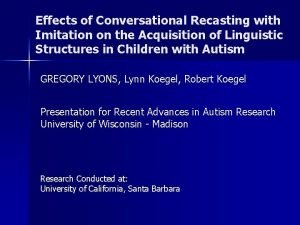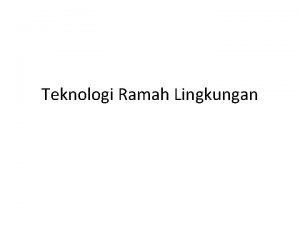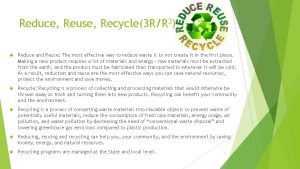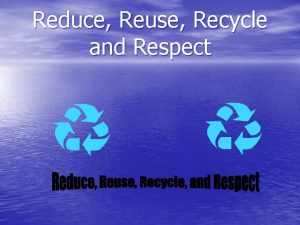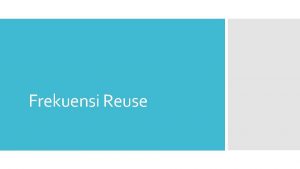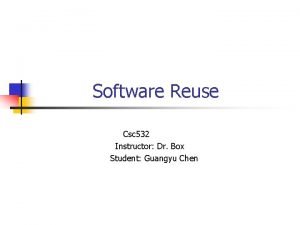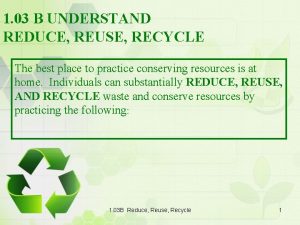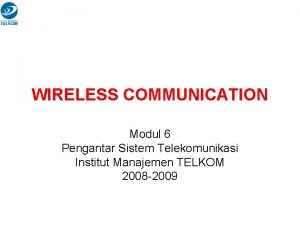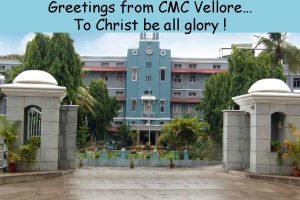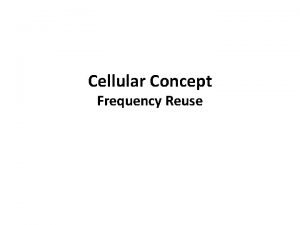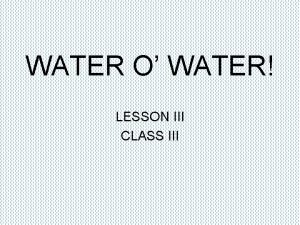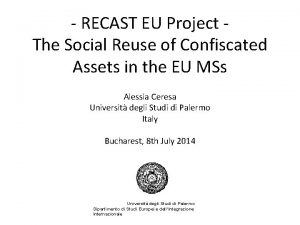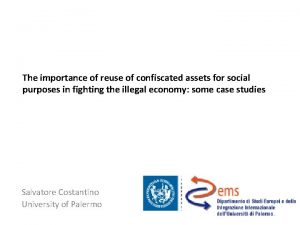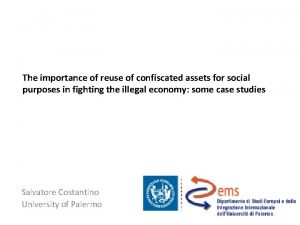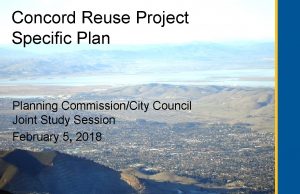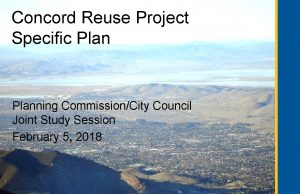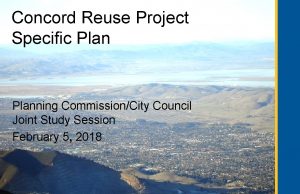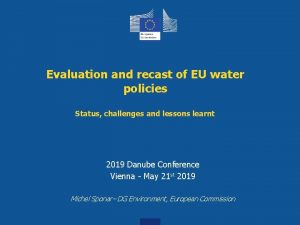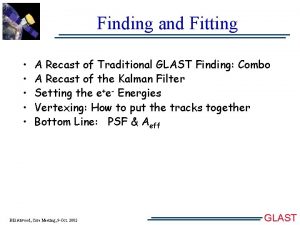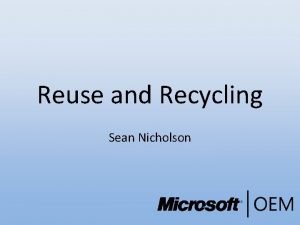RECAST EU Project The Social Reuse of Confiscated














- Slides: 14

- RECAST EU Project The Social Reuse of Confiscated Assets in the EU MSs Alessia Ceresa Università degli Studi di Palermo Italy Bucharest, 8 th July 2014 Università degli Studi di Palermo Dipartimento di Studi Europei e dell’Integrazione Internazionale

INSTITUTIONAL and SOCIAL REUSE The EU MSs can be divided within two categories according to the typology of reuse of confiscated assets: • Institutional reuse: i. e. confiscated assets are absorbed within the State budget (most diffused) • NGOs/Society: i. e. aimed at giving visibility to the confiscated assets and spread a social message “what stems from crime is given back to society”, through a “social fight against organised crime policy

SOCIAL REUSE OF CONFISCATED ASSETS (SRCA) Currently there are two models of SRCA in EU: • Direct reuse: confiscated assets are directly used for social purposes • Indirect reuse: the reuse of proceeds of the confiscated assets through established specialised funds/programs that invest these proceeds for fighting drug trafficking or crime prevention

DIRECT and INDIRECT REUSE Among the EU MSs adopting SRCA, it is possible to classify the main experiences, as follows: • DIRECT REUSE: -Belgium (Flemish region) -Italy • INDIRECT REUSE: -France -Luxembourg -Spain -UK (Scotland)

DIRECT REUSE: BELGIUM (Flemish region) 1/2 Legislative framework: Decree of 15 July 1997 containing the Flemish Housing Code (Décret contenant le Code Flamand du Logement). Concretely applied since 2010 – 4 cases in Antwerp of “social housing” • Procedure: art. 90 “social management” scheme of real estate (i. e. sociaal beheer). OGO selects buildings unsuitable according to certain parameters (minimum quality standard comfort-safety-health). The right of the municipalities to temporarily manage unsuitable / uninhabitable or abandoned property from its negligent owners, on the condition that the property will be restored / renovated and used for social housing for a certain period of time. The owner keeps his rights over the property, but the municipality acquires the right to temporary manage the buildings for 9 years or longer, if more time is needed to regain investments made to improve the real estate and rent them as social housing to needy people (duration of lease contract is calculated in conformity) • Aim: municipalities can take over a real estate to a negligent owner for social purposes, to avoid vacancy and dilapidation of homes/buildings, which leads to decay of neighborhoods. It is under discussion to extend this practice also to confiscated criminal assets within near future • Involved actors: -Negligent owner (voluntary agreement-1 month to repair the property/city’s offer of social housing/imposed forced social housing -3 months to claim his/her property) -Municipal Council (mayor + members of the municipality assembly) -AG Vespa (municipal company in charge for the urban projects that organises the restoration/renovation of houses/buildings) -SVKA (Social Rental Agency Antwerp – in charge for the management of the rental social housing) agreement since 2013 •

BELGIUM: SRCA Beneficiaries 2/2 “Social housing providers”, although there isn’t a specific procedure: • Social housing companies • the Flemish Housing Fund for Large Families • Social housing (‘tenants’) associations • Social rental agencies (SVKs) -agreement SVKA and Antwerp municipality since 2013 • Public centres for social welfare (OCMW) -new agreement is ongoing with Antwerp municipality-

DIRECT REUSE: ITALY 1/2 Legislative framework: art. 12 -sexies l. n. 356/1992 (confiscation of unjustified values for certain crimes only) and d. lgs. n. 159/2011 Antimafia Code, preventive proceedings (i. e. Confisca di prevenzione): immovable • Procedure: from confiscation order to beneficiary assignment average time 4 y. and 3 m. 1° Confiscation order by Judge + administrator appointment (asset expertise) 2°ANBSC: 1)expresses its interest in managing the assets, before their deliver to entities recognised by law; 3)within 6 months from the 1° confiscation order, ANBSC has to diffuse a list of confiscated assets (beneficiaries info); 2) technical and juridical expertise + destination of asset to beneficiary for a certain use + 1 year monitoring of the administrator with the support of Local Prefectures’ task-forces ‘Nuclei di supposto’ 3°Potential beneficiaries are involved at an early stage: e. g. Municipalities are involved already in the procedure of asset esteem (ANABSC expertise) and collect info on the condition of the asset, besides local authorities are involved in the monitoring activity to verify whether the asset is used for the original intent by beneficiaries. Beneficiaries are informed by ANBSC on the asset availability, through the transmission of an application form to formalise their interest in requiring the asset (i. e. ad hoc projectsdirect /indirect use) 4°Public Real Estate Agency (Ag. Demanio) is in charge to verify whether the local entity accomplish a specific ‘set of requirements’ (N° and asset features, logistic location, etc. ). In case of this Agency denial, the ANBSC cannot transfer the asset •

ITALY 2/2 5°Direct management by local entities also joined in associations; Indirect management: the ownership belongs to the local entity, but the asset is transferred (i. e. agreement) and managed by NGOs or private sector associations. The agreement is “free of charge, in respect with the transparency, suitable publicity and equal treatment of entities principles” 6°Local entities select the potential beneficiaries in case of indirect use (discretional criteria). Aim: hamper the asset could be still available to the subject it was confiscated to. • Aim: (art. 48, paragraph 3, lett. C) d. lgs. n. 159/2011 Antimafia Code) “Destination of assets for institutional or social purposes”: give back to the civil society and community the assets collected through illegal activities by organised crime • Involved actors: -Criminal court and Tribunale di prevenzione + Administrator -ANBSC: key actor (it determines disposal options)- d. l. 04. 02. 2010 n. 4 conv. L. 31. 03. 2010 n. 50 -Agenzia del demanio (Public Real Estate Agency) -Prefettura (“task-forces” to monitor the proper use of the confiscated assets: collect data from beneficiaries and report to ANBSC) -Beneficiaries: State institutions; Local entities (i. e. Municipalities, Region/Province); NGOs/associations (e. g. “Libera, nomi e numeri contro le mafie” representing local entities aim; other entities (i. e. Therapeutic communities, rehabilitation centres and clinics for drug addiction, certified associations for the environment protection-ecological aim-; companies: workers in cooperative societies, who were employed in the confiscated company PROBLEMS -Direct management (80%): public administration entities have limited economical resourced for the asset management. They have to demonstrate a priori to accomplish other requirements, despite of the economical factor, to the Agenzia Demanio: e. g. number and assets features, logistical location, etc. -Corporate asset: employees of the confiscated company usually found a cooperative society, often the problem is a lack of technical and management skills to run a business

INDIRECT REUSE: FRANCE Legislative framework: Decree of 17 March 1995 n. 95 -322 has established the “Fonds de concours”. Almost unknown till 2007, when a judge promoted this Fund among magistrates. • Procedure: 1° COURT: the confiscation order contains a disposition according to which the proceeds of movable/immovable assets confiscated in connection with drug crimes should be addressed to MILDT 2° AGRASC: it is in charge for the auction sale of movable (2/3 months)/immovable (3/4) assets related to drug crimes. AGRASC transfers the proceeds to the MILDT bank account 3° MILDT: the annual budget (31. 12 of every year) is proportionally distributed among Ministries: -Ministry of Interior (60%): 1 year projects presentation to MILDT (select and validate projects) -Ministry of Justice (20%): “ -Ministry of Budget (10%): “ -Other Ministries (10%): the money are used to finance projects with social aim for prevention, drug treatment or fight against drug trafficking (ministry of Social Affaires, Health, Education) • Aim: the fight against drugs and any form of addiction (e. g. tobacco, drug, alcohol, etc. ) at an institutional public level, since this SRCA may be defined as a “socio institutional” system • Involved actors: -AGRASC: Agence de gestion et de recouvrement des avoir saisis et confisqués -MILDT: Mission Interministérielle de lutte contre la drogue et la toxicomanie (inter-ministries org) -Beneficiaries: Ministry of Interior, Justice, Budget and other Ministries among which Social Affaires •

INDIRECT REUSE: LUXEMBOURG Legislative framework: Law 17 March 1992 on drug trafficking established the “Fonds de lutte contre le trafic de stupéfiants” (art. 5), transformed in 2010 into “Fund to fight against certain forms of criminality” (“Fonds de lutte contre certaines formes de criminalité”), covering also money laundering and other serious crimes • Procedure: an interagency cooperation working smoothly 1° General Prosecutor Office enforces the confiscation order 2° AED-Tax Administration Office is in charge for the sale of confiscated assets 3° the Fund is a Government institution that receives the proceeds from the sale of assets related to drug trafficking, money laundering and other serious crimes. Its functions are the monitoring the projects and eventually stop them for anomalies/insufficient results. The Fund produces an annual repost (www. mf. public. lu/publications/index. html) • Aim: the Fund supports programs in fighting these crimes • Involved actors: -General Prosecutor Office -AED (Administration de l’Enregisrement et des Domains): i. e. Tax Administration Office -Beneficiaries: including international organizations, national institutions and NGOs (e. g. Caritas-Bangladesh, Association Solidarité Louxembourg Nicaragua, etc. ) •

INDIRECT REUSE: SPAIN Legislative framework: Law 29 May 2003 n. 17 abrogated and develops the original Law n. 36/1995 (Ley del Fondo) and established the “Fondo de bienes decomisados por tráfico de drogas y otros delitos relacionados” referring to assets confiscated in drug cases and drug contreband • Procedure: Mesa de Coordinación de Adjudicaciones (Coordinating Bureau for Allocation) within the Ministry of Health, is the key actor aimed at identifying the assets (proceeds form drug trafficking) to be allocated to the Fund adopting decisions with regards to their destination to beneficiaries • Aim: 1) to finance programmes for drug addiction prevention, assistance to drug addicts and their social and occupational rehabilitation; 2) to promote and improve measures to prevent, investigate, prosecute and repress drug related crimes; 3) to promote international cooperation on such matters. • Involved actors: -Mesa de Coordinación de Adjudicaciones (Coordinating Bureau for Allocation) within the Ministry of Health -Beneficiaries: Law Enforcement Agencies charged with counter-narcotics activities; NGOs and non-profit working in the substance abuse field; regional and local governments and authorities; the Government Delegation for the National Plan on Drugs; international organizations and institutions •

INDIRECT REUSE: UK (Scotland) Legislative framework: Proceeds of Crime Act 2002, this Act refers to “criminal conduct, unlawful conduct or money laundering” • Procedure: The ill-gotten gains of crime collected on the base of the Proceeds of Crime Act are invested in the ‘Cash. Back for Communities’ programmes for social reuse (no Gov. Budget for this programme): i. e. in community programmes, facilities and activities largely, but not exclusively, for young people at risk of turning to crime/anti-social behaviours as a way of life • Aim: 1) positive (healthy, fun, active, engaging); 2) open to all (accessible, well advertised, free of charge, of interest to all irrespective of age, gender, ethnicity, etc. ); 3) developmental (aims at changing behaviours and attitudes and at developing skills); 4) sustainable • Involved actors: -Scottish Government -Scottish Courts Service -The Crown Office -Procurator Fiscal’s Service -other Law Enforcement Agencies -Beneficiaries: local communities with a special focus on youths, although not exclusively •

DIRECTIVE 2014/42/EU • EU DIRECTIVE: invites EU MSs to “consider taking measures allowing confiscated property to be used for public interest or social purpose” with regards to management and disposal of frozen or confiscated properties. • RECAST: it is an exploratory research on the Social Reuse in line with the EU Directive ratio, aimed at creating common EU standards on this issue. =First results emerged from EU MSs not having SRCA yet= (data gathering) Hampering aspects: -legal aspects -economical aspects Transferability aspects: -indirect reuse (more flexible - less expensive system)

Thank you for your attention Università degli Studi di Palermo Dipartimento di Studi Europei e dell’Integrazione Internazionale
 Recast esl
Recast esl Recasting language examples
Recasting language examples Tujuan teknologi ramah lingkungan
Tujuan teknologi ramah lingkungan 3r reduce reuse recycle
3r reduce reuse recycle Reuse adalah
Reuse adalah Reduce reuse recycle objectives
Reduce reuse recycle objectives Respect recycle
Respect recycle Frekuensi reuse
Frekuensi reuse Advantage of reuse
Advantage of reuse Make a poster reduce reuse recycle
Make a poster reduce reuse recycle Reuse distance
Reuse distance Advantages and disadvantages of dialyzer reuse
Advantages and disadvantages of dialyzer reuse Frequency reuse distance formula
Frequency reuse distance formula Bee green recycling
Bee green recycling Water o water
Water o water

